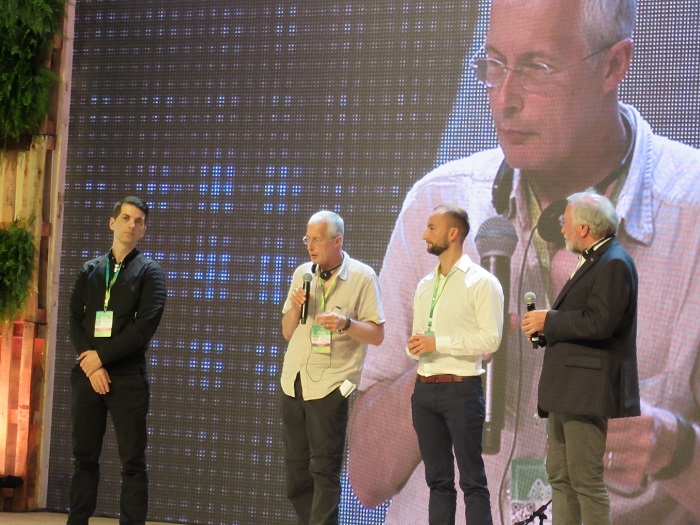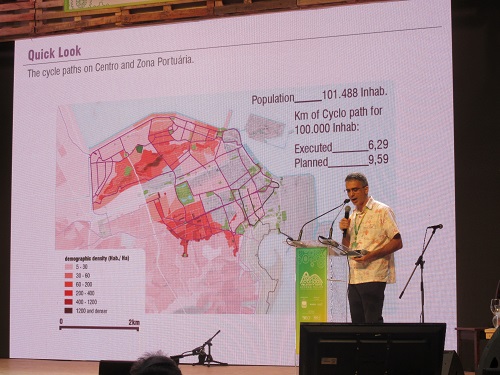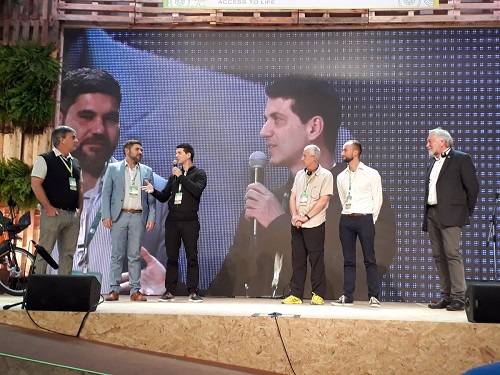
Velo-city day 4: Scientists for Cycling - Evaluating the impact of cycling measures and Fusion Mobility
On the last day of the Velo-city conference, the Scientists for Cycling sessions ended with a session on the impact of cycling measures and another introducing the concept of “Fusion Mobility”.
What is the potential of cycling measures? How can it impact the promotion of cycling? Three researches from Lisbon and Rio de Janeiro dived into these questions.
Rosa Felix from the University of Lisbon presented research on the barriers that potential cyclists perceive and the motivators to get them on the bicycle. In the study, they compared cyclists to non-cyclists. The most reported barriers that came out of the study were the danger of cycling in traffic, but also the distance that needs to be covered. Important triggers to get people on a bicycle were environmental concerns and the fact that cycling is faster and cheaper than other modes. People started cycling when the cycling network expanded or when they moved closer to their work.
Raul Bueno from PUC Rio showed a study on the cycle path network in Rio de Janeiro. The study was focused on different kind of cycle paths, from urban and sub-urban cycle paths to leisure cycle paths. It ranked the different paths in the city according to the relationship to the cities centrality and demographics. With a heat map, it showed the activity in the city and how the cycle paths covered this. The outcome was that the cycle paths that are in place now and will be developed do not cover the busiest parts of the city well, except from the area of Copacabana.

The third study is about the evaluation of the impact of bicycle skill training on increasing levels of cycling in Lisbon. People that participated in the training mainly wanted to learn how to ride a bike because of leisure reasons. The outcomes of the study will help to propose policy changes for cities and increase the use of bicycles.
In the session on “Fusion Mobility”, Manfred Neun, member of the advisory board of the Scientists for Cycling network, first introduced the concept. He presented the six building blocks of Fusion Mobility:
- Active mobility;
- Public space;
- EcoMobility hierarchy: prioritising modes of transports in the right order, with walking and cycling on top;
- Shared Mobility – most successful if bike share is part of public transport, needs to implemented responsibly;
- Future vehicles, spaces + infrastructure;
- Connected mobility.
Neun stressed that up to now, the view on these different areas has been fragmented both in policy and research. We need to correlate them one by one and measure them in a comparable way. The concept of Fusion Mobility offers the opportunity to change perspectives from technology-centred to people-centred.

Federico Fraboni from the University of Bologna presented the XCycle project, which has the goal of equalising the treatment of bicycles in transport through advanced technologies. The researchers involved in the project found that barriers to cycling that are most relevant are safety and comfort. Statistics show that there are big differences in accident typology across Europe, but cars are the most common opponent vehicles on average. Often drivers fail to detect cyclists. The researchers established a classification of the most dangerous scenarios for accidents and created a model of factors influencing the severity of bicycle crashes. Based on these models, they developed and/or tested technologies that could prevent the most severe accidents, especially in trucks. They found that multimodal warnings worked best, for example the sound of a bicycle bell. Automatic Emergency Braking is also an important technology that could prevent accidents. In the project, they also addressed questions like whether technologies can amplify injustice and social hierarchy in traffic or regarding negative attitudes and aggressions towards cyclists.
In the final presentation, Juliana de Castro from the Federal University of Rio de Janeiro presented research on data from Rio’s bike share system. The study looked at user’s profiles regarding travel behaviour, the interactions between travel patterns and land use, and the identification of priority areas for mobility management. It found that 44% of the users of the system were women and 56% men. Most of them were from the age range 20-40.
Network/Project Involved:
Contact the author
Recent news!
Upcoming events
Contact Us
Avenue des Arts, 7-8
Postal address: Rue de la Charité, 22
1210 Brussels, Belgium









